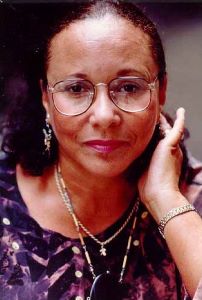The People Could Fly: American Black Folktales

Author:
Virginia Hamilton ![]()
Content:
Legend of Flying Africans
Illustrator:
Diane Dillon, Leo Dillon
Publication:
1985 by Alfred A. Knopf
Genre:
Anthology, Fairy Tales, Fantasy, Fiction, Folk Tales
Pages:
178
Current state:
This book has been evaluated and information added. It has been read but content considerations may not be complete.
Book Guide
This major contribution to children’s literature brings the fascinating range of American Black folktales and humor to all children.
In this treasury, we hear the voice of Virginia Hamilton–a voice that echoes the slaves and fugitives from her own American black ancestry as she tells the stories that keep the culture alive. Here are the spirited trickster tales where the wily Bruh Rabbit outwits larger and stronger animals; robust tall tales filled with riddles and laughter; spine-chilling ghost and devil tales; and finally the moving tales of freedom, including true slave narratives as well as fantasy escapes exemplified by the hauntingly beautiful title story, “The People Could Fly.”
From virginiahamilton.com
To view an example page please sign in.
Content Guide
Please sign in to access all of the topics associated with this book and view other books with the same topics.
Please sign in to access the locations this book takes place in and view other books in the same location.
Please sign in to discover interesting content included in the illustrations of this book.
Resource Guide
Episode 70: Why Read Fairy Tales?
Released in 2020 by The Literary Life
Available formats: Streaming Audio
Length: 1 hr. 29 min.
View on the The Literary Life site
"Angelina Stanford and Cindy Rollins tackle the topic of fairy stories, discussing the what, why and how of reading them. Angelina shares the distinctive characteristics of fairy stories in contrast to other types of stories, such as myths. They deal with the question of whether fairy tales are 'escapist', the influence of the Grimm brothers scholarly work on interpreting fairy stories, and allowing the story to unveil its deeper truths without forcing meaning onto it.
Angelina gives an illustration of how to see the gospel messages in fairy tales by talking us through the story of Sleeping Beauty. She refutes the ideas that fairy tales are about human romance or are misogynistic. She also highlights some of the Enlightenment and Puritan responses to fairy tales that still linger with us today. Cindy and Angelina also discuss some common concerns such as the magical, weird, or scary aspects of fairy tales. Angelina also makes a distinction between folk tales, literary fairy tales, and cautionary tales."





